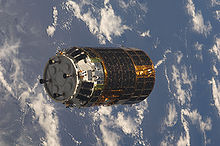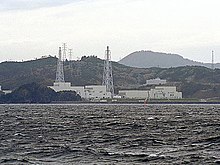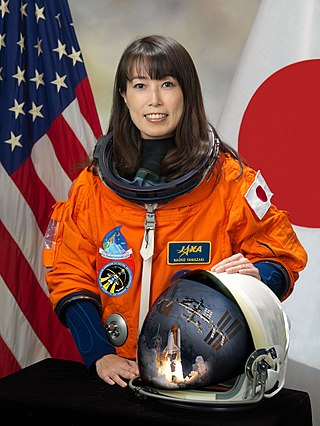
Naoko Yamazaki is a Japanese engineer and former astronaut at JAXA. She was the second Japanese woman to fly in space. The first was Chiaki Mukai.

Koichi Wakata is a Japanese engineer and a JAXA astronaut. Wakata is a veteran of four NASA Space Shuttle missions, a Russian Soyuz mission, and a long-duration stay on the International Space Station. During a nearly two-decade career in spaceflight, he has logged more than eleven months in space. During Expedition 39, he became the first Japanese commander of the International Space Station. Wakata flew on the Soyuz TMA-11M/Expedition 38/Expedition 39 long duration spaceflight from 7 November 2013 to 13 May 2014. During this spaceflight he was accompanied by Kirobo, the first humanoid robot astronaut. As of 2023, he is the longest active astronaut in the world.

Chiaki Mukai is a Japanese physician and JAXA astronaut. She was the first Japanese woman in space, the first Japanese citizen to have two spaceflights, and the first Asian woman in space. Both were Space Shuttle missions; her first was STS-65 aboard Space Shuttle Columbia in July 1994, which was a Spacelab mission. Her second spaceflight was STS-95 aboard Space Shuttle Discovery in 1998. In total she has spent 23 days in space.
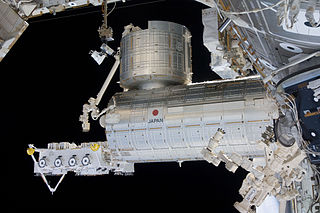
The National Space Development Agency of Japan, or NASDA, was a Japanese national space agency established on October 1, 1969 under the National Space Development Agency Law only for peaceful purposes. Based on the Space Development Program enacted by the Minister of Education, Culture, Sports, Science and Technology (MEXT), NASDA was responsible for developing satellites and launch vehicles as well as launching and tracking them.

The Japan Aerospace Exploration Agency (JAXA) is the Japanese national air and space agency. Through the merger of three previously independent organizations, JAXA was formed on 1 October 2003. JAXA is responsible for research, technology development and launch of satellites into orbit, and is involved in many more advanced missions such as asteroid exploration and possible human exploration of the Moon. Its motto is One JAXA and its corporate slogan is Explore to Realize.
Institute of Space and Astronautical Science, or ISAS, is a Japanese national research organization of astrophysics using rockets, astronomical satellites and interplanetary probes which played a major role in Japan's space development. Since 2003, it is a division of Japan Aerospace Exploration Agency (JAXA).
The National Aerospace Laboratory of Japan (NAL), was established in July 1955. Originally known as the National Aeronautical Laboratory, it assumed its present name with the addition of the Aerospace Division in 1963. Since its establishment, it has pursued research on aircraft, rockets, and other aeronautical transportation systems, as well as peripheral technology. NAL was involved in the development of the autonomous ALFLEX aircraft and the cancelled HOPE-X spaceplane.

Katherine Megan McArthur is an American oceanographer, engineer, and NASA astronaut. She has served as a Capsule Communicator (CAPCOM) for both the Space Shuttle and International Space Station (ISS). Megan McArthur has flown one Space Shuttle mission, STS-125 and one SpaceX mission, SpaceX Crew-2 on Crew Dragon Endeavour. She is known as the last person to be hands on with the Hubble Space Telescope via the Canadarm. McArthur has served in a number of positions including working in the Shuttle Avionics Laboratory (SAIL). She is married to fellow astronaut Robert L. Behnken.

Satoshi Furukawa is a Japanese surgeon and JAXA astronaut. Furukawa was assigned to the International Space Station as a flight engineer on long-duration missions Expedition 28/29 (2011) and Expedition 69/70 (2023-2024).

Akihiko Hoshide is a Japanese engineer, JAXA astronaut, and former commander of the International Space Station. On August 30, 2012, Hoshide became the third Japanese astronaut to walk in space.

The following outline is provided as an overview of and topical guide to space exploration.

Takuya Onishi is a Japanese astronaut who was selected for the Japan Aerospace Exploration Agency (JAXA) in 2009. He spent four months on board the International Space Station in 2016.

Thomas Gautier Pesquet is a French aerospace engineer, pilot, European Space Agency astronaut, actor and writer. Pesquet was selected by ESA as a candidate in May 2009, and he successfully completed his basic training in November 2010. From November 2016 to June 2017, Pesquet was part of Expedition 50 and Expedition 51 as a flight engineer. Pesquet returned to space in April 2021 on board the SpaceX Crew Dragon for a second six-month stay on the ISS.
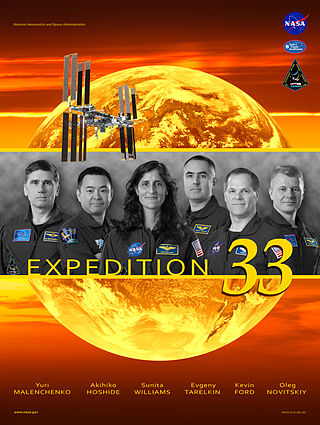
Expedition 33 was the 33rd long-duration expedition to the International Space Station (ISS). It began on 16 September 2012 with the departure from the ISS of the Soyuz TMA-04M spacecraft, which returned the Expedition 32 crew to Earth.

The Japanese space program originated in the mid-1950s as a research group led by Hideo Itokawa at the University of Tokyo. The size of the rockets produced gradually increased from under 30 cm (12 in) at the start of the project, to over 15 m (49 ft) by the mid-1960s. The aim of the original research project was to launch a man-made satellite.

Kounotori 3, also known as HTV-3, was the third flight of the Japanese H-II Transfer Vehicle. It was launched on 21 July 2012 to resupply the International Space Station (ISS) aboard the H-IIB Launch Vehicle No. 3 manufactured by Mitsubishi Heavy Industries (MHI) and JAXA. Kounotori 3 arrived at the ISS on 27 July 2012, and Expedition 32 Flight Engineer and JAXA astronaut Akihiko Hoshide used the International Space Station's Canadarm2 robotic arm to install Kounotori 3, to its docking port on the Earth-facing side (nadir) of the Harmony module at 14:34 UTC.
The (Japanese) Lunar Exploration Program is a program of robotic and human missions to the Moon undertaken by the Japanese Aerospace Exploration Agency (JAXA) and its division, the Institute of Space and Astronautical Science (ISAS). It is also one of the three major enterprises of the JAXA Space Exploration Center (JSPEC). The main goal of the program is "to elucidate the origin and evolution of the Moon and utilize the Moon in the future".
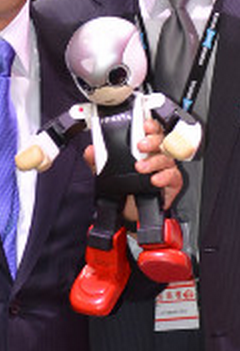
Kirobo is Japan's first robot astronaut, developed by University of Tokyo and Tomotaka Takahashi, to accompany Koichi Wakata, the first Japanese commander of the International Space Station. Kirobo arrived on the ISS on August 10, 2013 on JAXA's H-II Transfer Vehicle Kounotori 4, an unmanned resupply spacecraft launched August 4, 2013 from Japan's Tanegashima Space Center. A twin to Kirobo, named Mirata, was created with the same characteristics, and stayed on Earth as a backup crew member. The word "kirobo" itself is a portmanteau of "kibō" (希望), which means "hope" in Japanese, and the word "robo" (ロボ), used as a generic short word for any robot.
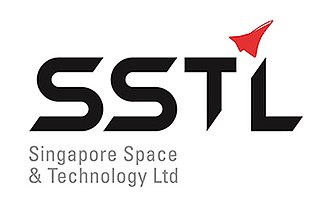
Singapore Space and Technology Ltd (SSTL) is a non-governmental space organization based in Singapore within the aerospace industry. SSTL is recognized by the International Astronautical Federation.

Expedition 66 was the 66th long-duration expedition to the International Space Station. The mission began after the departure of Soyuz MS-18 on 17 October 2021. It was commanded by European Space Agency astronaut Thomas Pesquet, the fourth European astronaut to command the ISS and first French astronaut to command the orbital laboratory until 8 November 2021 when Russian cosmonaut Anton Shkaplerov, who arrived aboard Soyuz MS-19 and took over his command.


